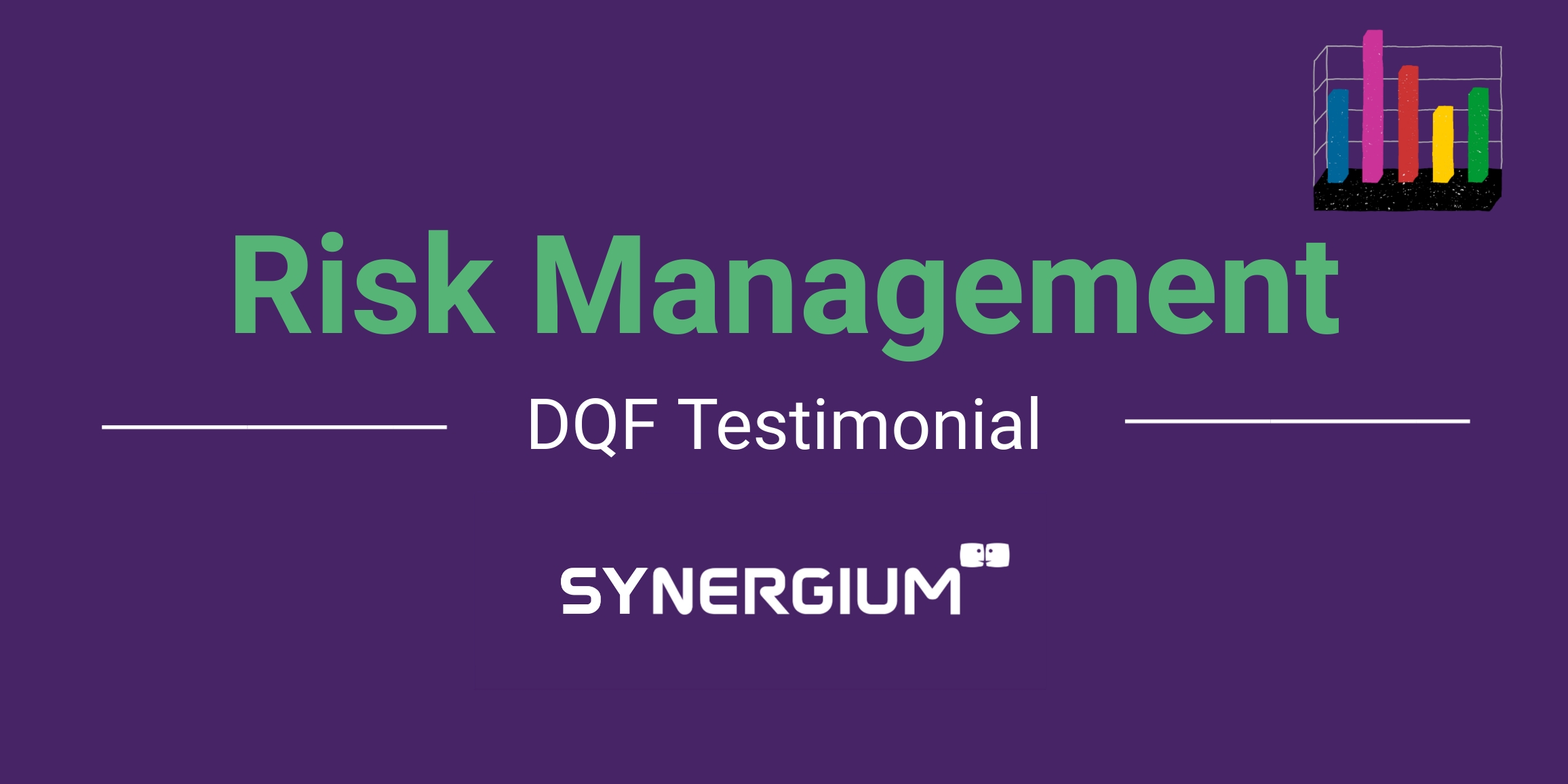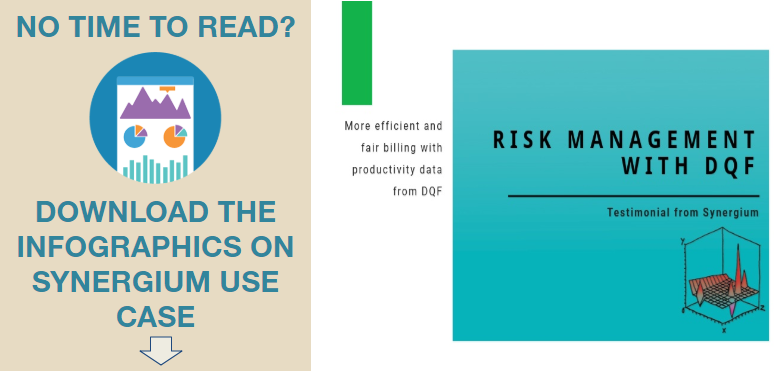Synergium use case: DQF as a Reliable Risk Management Tool

With machine translation and productivity challenges, LSPs need to become data owners and risk brokers, similarly to insurance companies. Managing your business means managing your data. If you collect and analyze productivity data, you can manage the risks of low productivity and profitability.
How an LSP from the Baltics uses TAUS DQF to minimize loss with more efficient and fair billing
By Mindaugas Kazlauskas, CEO of Synergium
Running an effective, profitable translation business while keeping your customers and stakeholders happy is challenging in the era of machine translation (MT). Especially for a relatively small LSP like Synergium. We employ 70 people in-house who manage a few hundreds of freelancers and work with multiple MLVs as clients. When it comes to ensuring gross profit daily, the story about an effective business becomes a story about the effective price negotiation and risk management.
MT and Productivity
We work with projects that contain different content types and volumes, from different clients and using many different translators, CAT tools and MT engines. As there is rarely any consistency, there is little control or predictability over the productivity of our translators and with that, the profitability of the work done.
At the same time, our clients require us to introduce machine translation with the expectation that it will lead to higher productivity and secure a discounted price for translations. This expectation is often based on assumptions, without real data to back it up, so we end up forming an up-front discount around a ballpark figure that we get from our customers. However, our experience shows that MT does not necessarily correlate with higher productivity.
The Risk of Flat Discounts on MT
There is no easy way for our project managers to predict the gross profit margin on a specific MT project when they decide to outsource it to a specific freelancer. Between the clients demanding the discount, freelancers refusing to accept the flat reduced price, and no data to justify either of the choices, we as an LSP are required to absorb the difference with the risk of not earning any profit.
When we applied a certain percentage of discount for segments with MT, we had to deal with pushback from freelancers. In a paradoxical situation where productivity fluctuates and pricing does not, we realized the need for a more flexible billing method. Finally, with the content exploding, we need all the translators that we can get, and the flexibility to also hire those who are more conservative about productivity expectations when using MT.
If we want to know how productive and, therefore, how profitable we are with a certain project, we need real-time, granular production data on time spent on projects.
Switch to Data-driven, Dynamic Billing
Getting the relevant productivity data that could be used as the billing unit and a guarantee that we are not operating at loss was crucial. However, for us it meant moving away from the traditional payment model that is based on words to paying our freelancers based on time spent.
How did we do that? We’ve managed to negotiate with the freelancers to pay them for the time spent, as that was considered a ‘lesser evil’ when working on MT projects. Our client’s habits were much harder to break, so we’ve continued charging them per word. With this, we still had a risk caused by discrepancy between the measurement units - charging by words, and paying by hours. However, this risk could be managed thanks to the granularity and accuracy of data that we were getting from the TAUS DQF.
The Advantage of DQF
We’ve considered other solutions for productivity tracking, including a plugin from SDL and reports directly from freelancers after the project has been completed. The caveats were the fact that the plugin was storing data on freelancers’ laptops, and the reports from freelancers weren’t always objective. DQF offered real-time production data and a stable reporting environment. It is being actively developed and supported and the TAUS brand name ensured trust from our freelancers. Finally, it offers further reporting automation possibilities via the DQF Data Connector.
Experience and Benefits using DQF
Currently, fifteen project managers are preparing projects with DQF and around three hundred freelancers and in-house translators are working with DQF every day. We’ve processed approximately 25 million words since fall 2017. That was an additional proof that DQF is scalable and robust. On top of it, it is also affordable, given that the only cost involved is the annual membership with TAUS.
For Synergium as an LSP the return on investment is clear - more data means more opportunity to manage productivity and profitability risks. The approximate number of saved FTEs in vendor and project management is two per year, which is 3% of the total employee headcount. Project managers accept the bit of the additional work involved in the project preparation as a cost of applying machine translation and avoiding price negotiation: “DQF helps us to keep projects profitable as we have productivity data to decide whom to outsource“.
Finally, for translators the only change is the change of mindset. In the words of one of the in-house translators at Synergium: “I like that DQF plugin lets me work in a familiar tool (SDL Trados Studio), on my own PC, and I don’t need to track the time manually.“ As for the freelancers, they see being paid per hour when working with MT as more objective and fair.
Conclusion
In conclusion, with machine translation and productivity challenges, LSPs need to become data owners and risk brokers, similarly to insurance companies. Managing your business means managing your data. If you collect and analyze productivity data, you can manage the risks of low productivity and profitability.
Watch the full presentation of the Synergium use case by Mindaugas Kazlauskas here.
About Synergium
Synergium is an LSP based in five countries around the Baltics, employing 70 people in-house and several hundred freelancers. They have been in the localization scene for the past 13 years and advocates of machine translation since 2012. Their client base comprises of many MLVs from a range of industry verticals: IT, Automotive, Heavy manufacturing, Life-Sciences.

Milica is a marketing professional with over 10 years in the field. As TAUS Head of Product Marketing she manages the positioning and commercialization of TAUS data services and products, as well as the development of taus.net. Before joining TAUS in 2017, she worked in various roles at Booking.com, including localization management, project management, and content marketing. Milica holds two MAs in Dutch Language and Literature, from the University of Belgrade and Leiden University. She is passionate about continuously inventing new ways to teach languages.
 by Dace Dzeguze
by Dace Dzeguze by Milica Panić
by Milica Panić by Dace Dzeguze
by Dace Dzeguze


